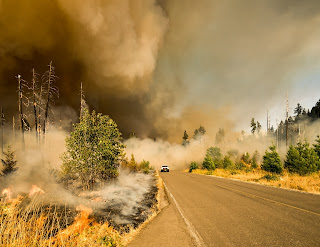MONOJ GOGOI
In a speech to the Chief Ministers, today, on April 27th, the Indian Prime Minister Narendra Modi tells towards the end of his speech that temperature is soaring in many parts of India drastically and much earlier than the normal period. He states that incidents of wildfires or fires in buildings, residential areas and hospitals are increasing rapidly increasing. Modi warns the Chief Ministers fire hazards may increase fatalities and create catastrophes. Hospital authourities should be more careful and ready for rapid response.
Wildfire is a very major natural disaster in many parts of the world, including
some parts in Australia, the United States of America, Brazil or Peru etc. In
many countries, fire was not considered seriously or more devastating than other
hazards like flood and erosion, cyclone, storm, earthquake, drought, landslide
etc. But now, wildfires or other fires are becoming more focal issues in some
countries where such incidents were not taken care of with much attention.
In a speech to the Chief Ministers, today, on April 27th, the Indian Prime Minister Narendra Modi tells towards the end of his speech that temperature is soaring in many parts of India drastically and much earlier than the normal period. He states that incidents of wildfires or fires in buildings, residential areas and hospitals are increasing rapidly increasing. Modi warns the Chief Ministers fire hazards may increase fatalities and create catastrophes. Hospital authourities should be more careful and ready for rapid response.
Wildfires were
also not common in Britain but in recent months some of the wildfire incidents
in the country indicates that the country is also going to be prone to the
wildfire incidents.
Climate scientists warn that many countries are going closer
to such blazes and the major driver for it is climate change which increases
temperature on the earth atmosphere.
Although Narendra Modi did not stated the
term climate change, it clearly indicates about the changing climate and global
warming in the Indian sub-continent.
(Photo by Marcus Kauffman on Unsplash)

Comments
Post a Comment